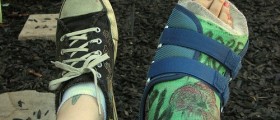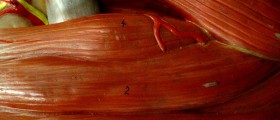
Dislocated Shoulder
The recovery time for dislocated shoulder may last long and the patients may sometimes lose their patience especially if they suffer from intensive and constant discomfort or pain. This injury of the shoulder may occur during a variety of sports activities such as playing rugby, skiing, and so on. The shoulder can be also injured in car accidents or in some other activities when nobody expects that injury might occur. The actual length of the recovery depends on the damage to the shoulder and its structures.
The shoulder is one of the largest joints in the body. It connects two bones, the humerus and the scapula. Apart from bones it consists of ligaments and tendons of many muscles, nerves and blood vessels.
Trauma is the leading cause of dislocation. The head of the humerus which is connected to the scapula may be wrenched out of its socket and the pain occurs instantly. This type of injury is classified as anterior shoulder dislocation. The head of the humerus is no longer connected to the scapula but is actually drawn in front of the rib cage.
On the other hand, posterior shoulder dislocation occurs as a result of anterior trauma to the shoulder joint. Type of injury is not so frequent and happens in only 5% of all cases. In comparison to anterior shoulder dislocation, this injury takes longer to heal completely.
Treatment for Shoulder Dislocation
After the injury the head of the humerus needs to be promptly returned to its original position, into the socket. This can be done early after the injury and any delay will only lead to swelling of the surrounding tissue and make the reposition harder. After adequate reposition the joint requires immobilization. The arm is put into a sling for 2 or 3 weeks. Doctors routinely perform X-ray of the shoulder to rule out or confirm any possible fracture of the humerus. If the bone suffered fracture the healing will only last longer and the patient may require surgical repair. The surgery is also performed if the cartilage rim has detached from the socket bone.
The rehabilitation starts after certain time and the goal of physical therapy is to restore all the movements. Initial exercises help in strengthening of the joint and surrounding muscles. After that additional exercises help in regaining of the joint function.
Some patients may complain about discomfort or even pain long after the process of healing has completed.
The healing period lasts from 4 to 12 weeks and may be prolonged if there is additional damage to the bones or cartilage, in elderly people and if person does not cooperate and follow the exercise regime.

















Your thoughts on this
Loading...